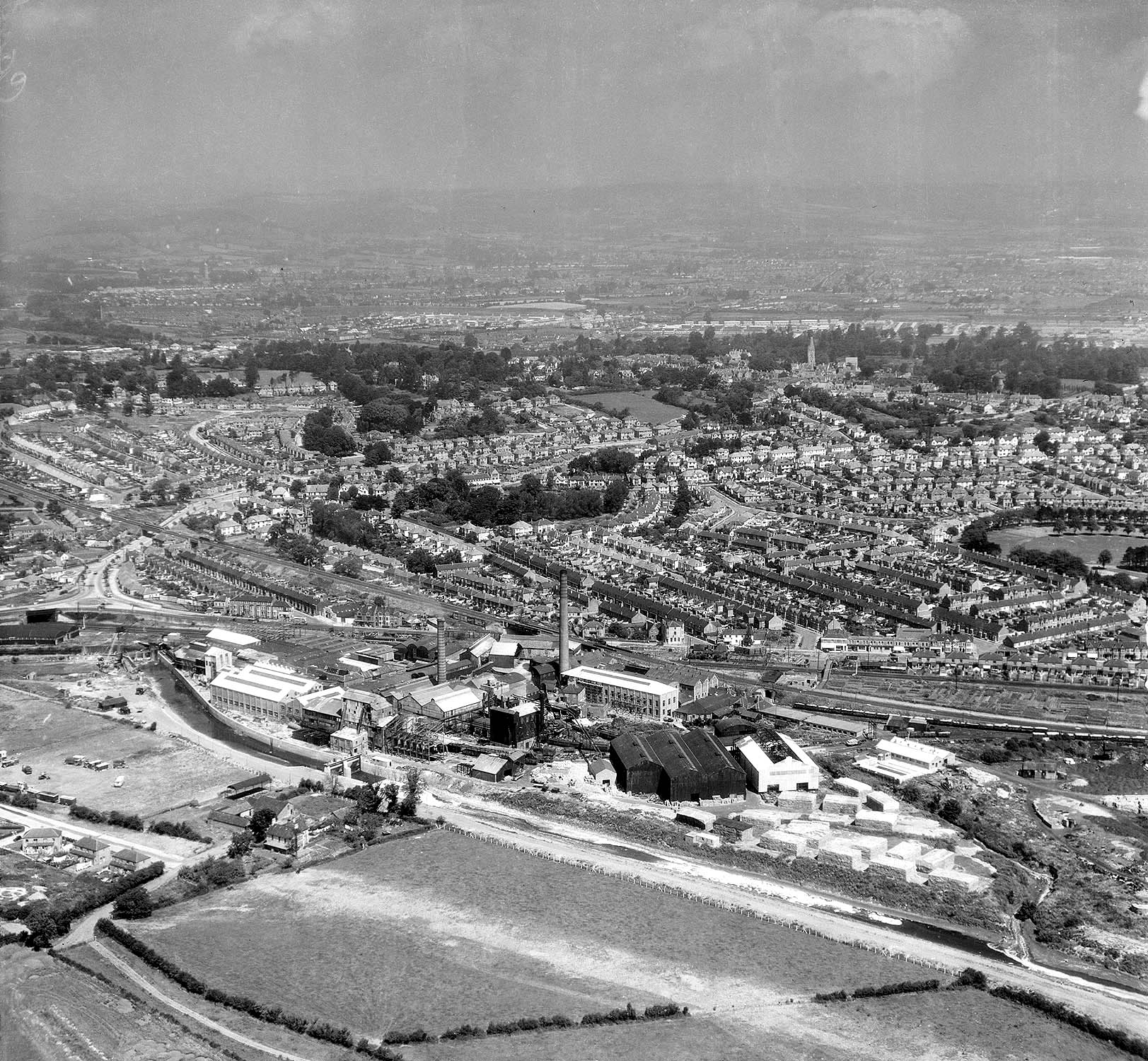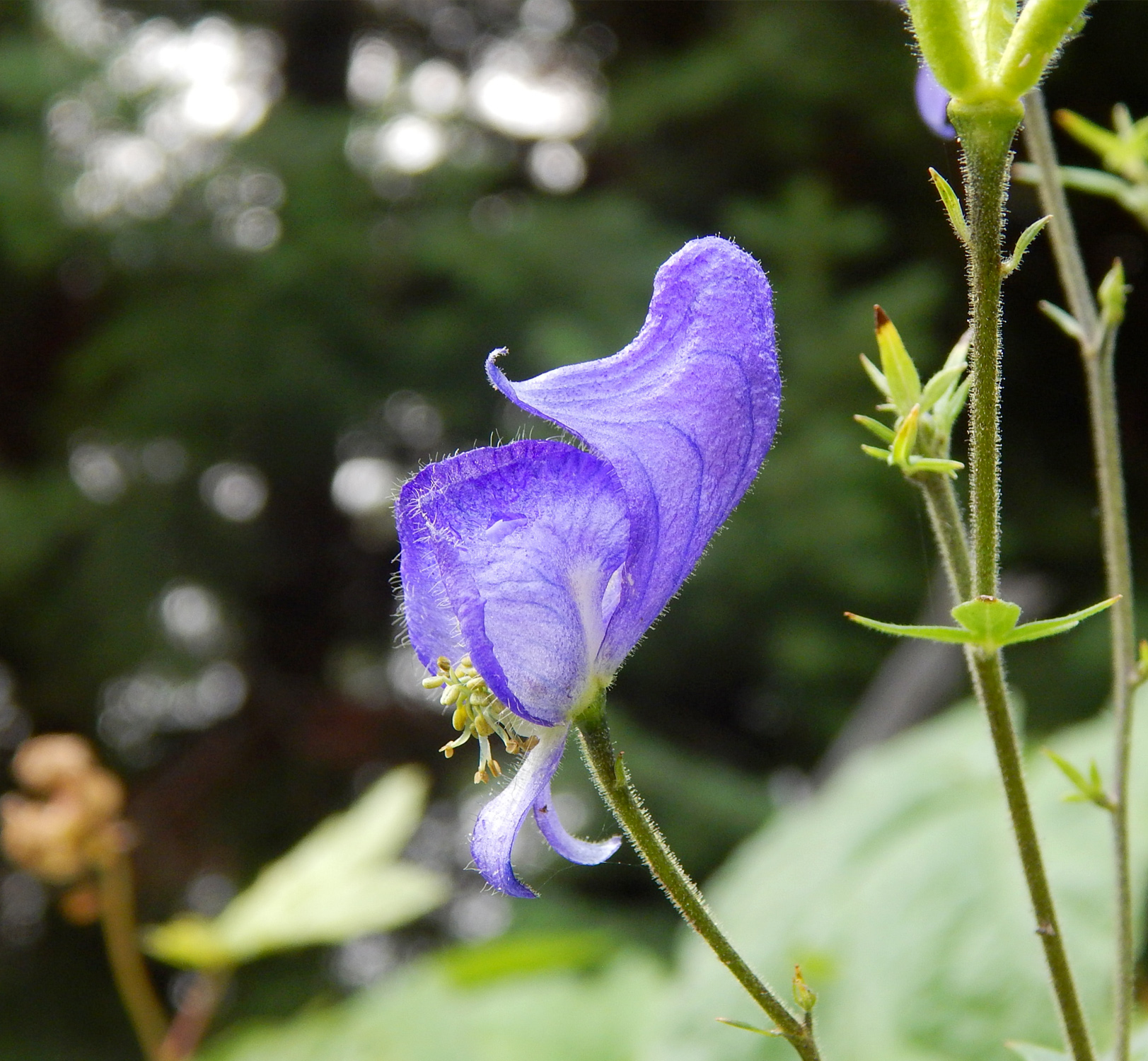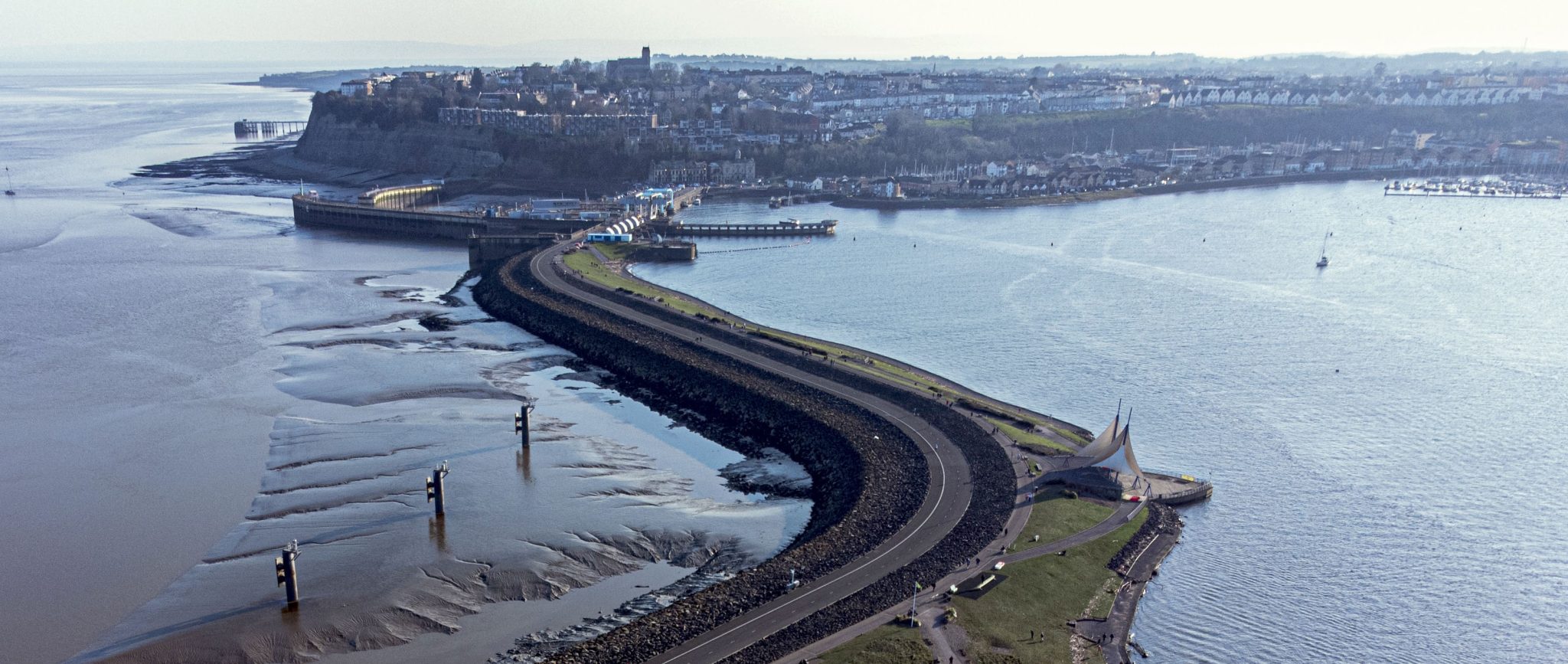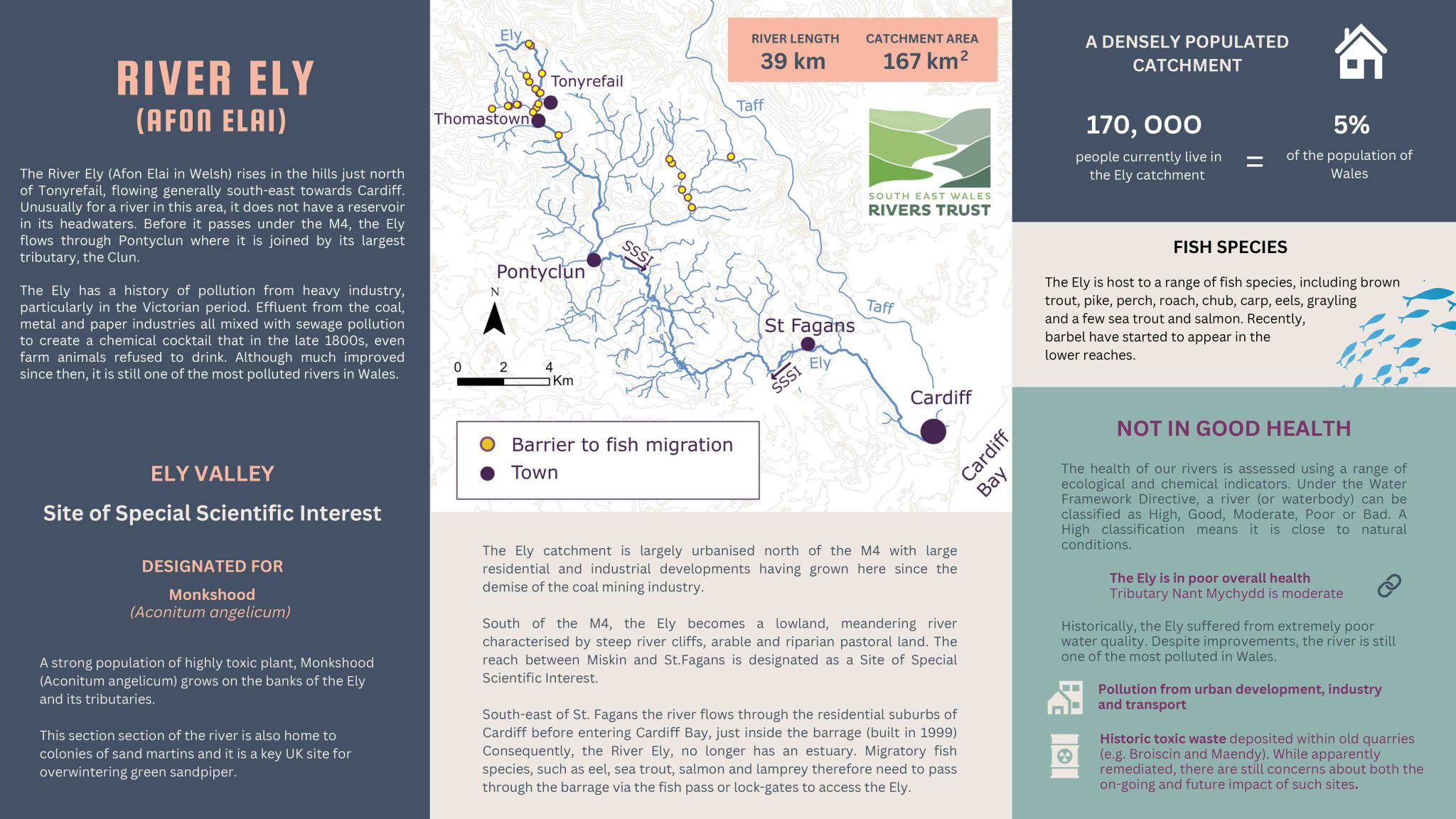October 2023
The Ely (or Afon Elai in Welsh) is a relatively short and largely urban river in South Wales. Unusually for the rivers of the area, it does not have a reservoir in its headwaters and instead rises from the hills just north of Tonyrefail (Mynydd Penygraig, Mynydd y Gilfach and the slopes of Mynydd Dinas), flowing generally south-east towards Cardiff. Before it passes under the M4, the Ely flows through Pontyclun where it is joined by its largest tributary, the Clun.
Thereafter, the river winds its way through farmland before passing through the western edges of Wales’s capital city and, some 24 miles from its start, enters the south western side of Cardiff Bay at Penarth Marina, just inside the barrage.

After it passes under the M4 motorway near Miskin, the Ely flows through a section of farmland before arriving at the outskirts of Cardiff. Photo: Nick Russill via Unsplash.
Anyone fearing the worst over the current state of Welsh rivers should take some heart from the story of the Ely. It is a river that has faced its fair share of issues in the past century and a half, to say the least. While it is still one of the most polluted rivers in Wales, the Ely’s water quality 150-years ago was about as bad as it gets.
Barriers to fish migration had been noted as a problem for the river as long ago as the mid-1800s. However, like many waterways in South Wales, it was the expansion in heavy industry and associated high levels of pollution that took the greatest toll on the Ely. Effluent from the coal, metal and paper industries all mixed with sewage pollution to turn its water into a multi-coloured chemical cocktail during large parts of the Victorian period. And unlike many other industrial rivers elsewhere in the UK, these pollution sources began high in the catchment, giving little refuge to the river’s flora and fauna.

The Ely Paper Mill in 1947. In the late 1800s, the works were discharging large amounts of bleaching agent into the Ely (which can be seen in the foreground passing in front of the factory), deteriorating further the river’s already dire water quality. The works finally ceased operation in 2000. Photo: People’s Collection Wales

In Victorian times the sizable Penarth Dock was built at the mouth of the Ely, where Penarth Marina is now located. It was from here that Isambard Kingdom Brunel’s famous ship, the SS Great Britain departed for the Falkland Islands in 1886, on her final commercial voyage. This painting shows the departure. People’s Collection Wales
Downloadable River Ely factsheet

The beautiful flower of the highly poisonous Monkshood plant (Aconitum anglicum), for which a 12km section of the River Ely is desginated a Site of Special Scientific Interest (SSSI). South East Wales Rivers Trust’s National Lottery RePrEEV project is enhancing Monkshood habitat (and other native flora) along the Ely. Photo: Josie Weiss via Unsplash
Ely Paper Mill, built in the early 1870s on the banks of the river, was a notorious source of pollution, said to have been discharging hundreds of tonnes of chloride of lime (a bleaching agent) and other chemicals into the Ely. Up to 1884, the river was also reported to thicken and turn a reddish colour from the twice-weekly discharges of sulphuric acid from the substantial Mwyndy iron ore mine at Llantrisant. A lower gradient and slower flow meant the Ely was less suited to deal with the levels of pollutants being received and by 1885, it was reported to be so noxious that farm animals were refusing to drink from it.
Efforts to clean the Ely along with other nearby rivers began in the 1860s, mainly due to concerns over the health of local people whose water supplies were reliant on it. Without the benefit of modern scientific tools, the methods of testing water quality in those times would today raise eyebrows. One was to put some minnows into a jar of river water and see how long they survived.
Despite the growing industrial output of the area, there were signs that the Ely’s wildlife was hanging on, perhaps due to these early efforts to improve water quality. In 1878, The Western Mail reported a Thomas Noyle being fined five shillings for taking a “salmon pink” (juvenile) from near Llantrisant. Two years later, the South Wales Daily News reported a 27lb otter being trapped by a local river keeper named Danks, apparently his ninth.
There were even early indications of improvement. At the turn of the century, the local clergy appear to have had enough confidence in the Ely’s water to perform baptisms in it. Then, at the 1904 annual meeting of the Taff and Ely Angling Association, the committee reported that “..owing to the absence of pollution in the Ely the prospects of sport are far better than they have been for many years.”
Sadly though, the encouragement did not last. The Ely’s water quality remained in a dire state for many decades through the early parts of the 20th Century. Concerningly, some of the problems encountered by Victorian river restorers still resonate today. Strong commercial interests and local political or jurisdictional boundaries were reported at the time to be hampering attempts to force tighter regulation of Ely polluters.
With the gradual disappearance of heavy industry, the Ely began to improve in the second half the 20th century. And as the water quality improved, fish populations slowly returned from the river’s many small tributaries. Nowadays it contains brown trout, pike, perch, roach, chub, carp, eels, grayling and a few sea trout and salmon. More recently, barbel have also been reported in the lower reaches.
Pollution threats to the Ely remain, however, mainly from wastewater treatment works and the new industries that have replaced the large factories and mines. The main stem is currently failing its Water Framework Directive assessments for water quality and for fish, giving it the lowest classification of a river in Wales as a result. Some barriers to fish migration also remain in the upper reaches, with various weirs and culverts identified in surveys carried out by the South East Wales Rivers Trust. These leave the currently precarious fish populations even more vulnerable to pollution episodes.
The river is also under threat from invasive species, particularly Japanese knotweed and Himalayan balsam, both plants that out-compete native species and in the latter’s case, can cause severe erosion issues. Zebra mussel and Killer shrimp have also found their way into Cardiff Bay, although neither species have appeared in the Ely yet.
And while the Ely’s crude, industrial legacy has faded, a more beautiful and natural source of deadly toxin remains along its banks. A section of the Ely Valley is SSSI-designated for the highly poisonous plant Monkshood (Aconitum anglicum), which is rare in the UK and only thought to exist in the wild in South Wales and South West England. All parts of this plant contain aconitine, an extremely harmful poison that affects the nervous and cardiovascular system. Even touching the plant can cause problems. One of its alternative names, “wolfsbane”, refers to the historical use of aconitine across Europe to kill wolves.
With National Lottery Funding, South East Wales Rivers Trust have begun a project to protect the Monkshood in the Ely Valley and to raise awareness about its dangers. The Restoration, Protection and Enhancement of Ely Valley SSSI (RePrEEV) project will also improve habitat for other native plant and animal species along the riverbank.

A view of Cardiff Bay and its barrage looking west towards Penarth Marina, where Penarth Dock used to be. The mouth of the Ely is on the right hand side. Photo: Callum Blacoe via Unsplash
References:
“Vitriol in the Taff: River Pollution, Industrial Waste, and the Politics of Control in late Nineteenth-Century Rural Wales.“ Keir Waddington, Cambridge University Press. 19 March 2018.
Welsh Newspaper Article Archive, National Museum of Wales.
RePrEEV Project, South East Wales Rivers Trust
Our thanks also to Tony Rees MBE of South East Wales Rivers Trust for help with information.

